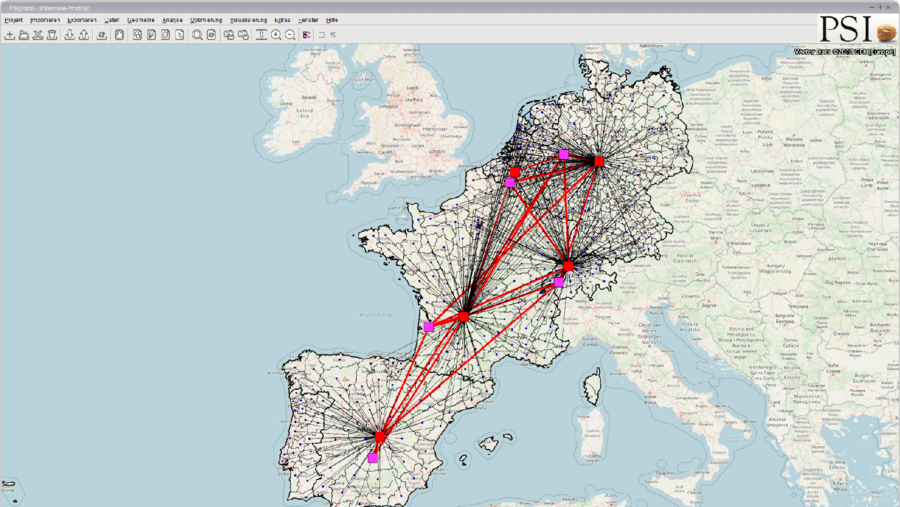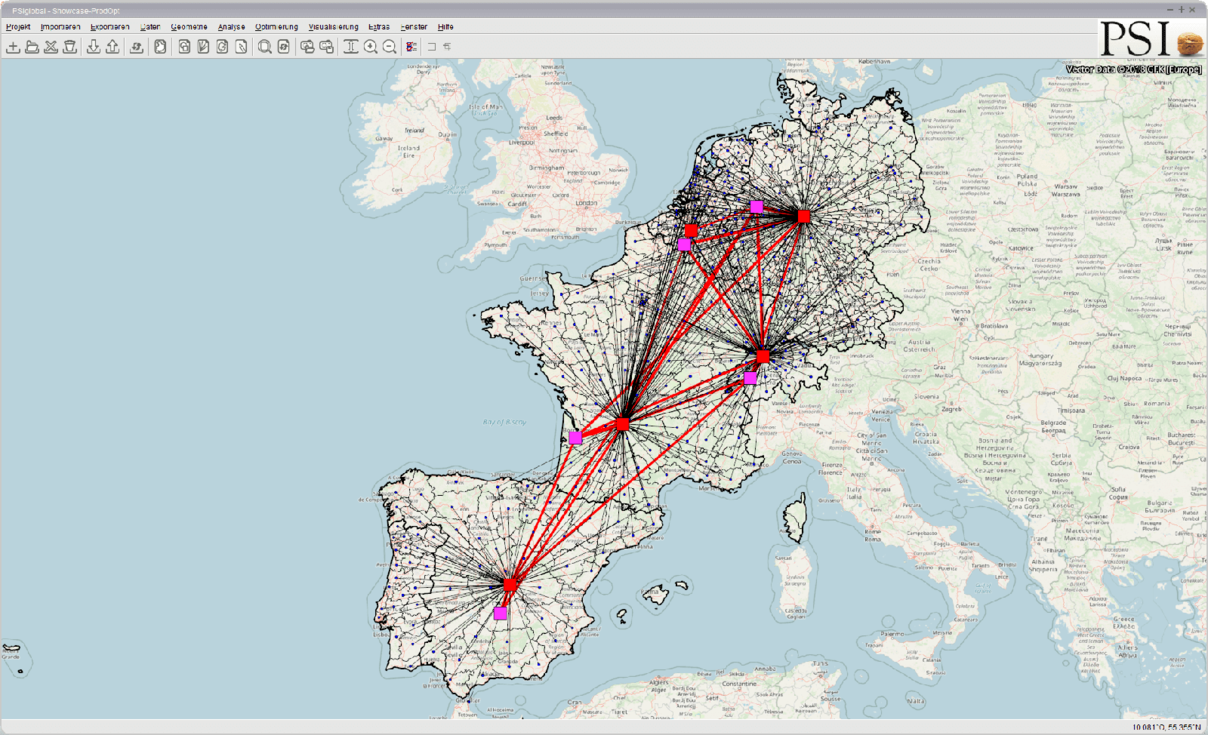
PSIglobal - Module Sourcing strategies
Are you wondering how capacity bottlenecks in your production or at your suppliers may affect your network? Is it possible for you to absorb the loss of a supplier or production facility elsewhere? What is your optimal sourcing strategy: make-or-buy, global vs. local, single vs. multiple? PSIglobal supports you in optimizing the flow of goods on the procurement side.
Cost-optimized utilization of delivery, production and warehouse capacities
A supplier or production failure leads to significant disruptions in the entire supply chain. This is followed by the question of how you can avoid this. Does it make sense to expand the capacity of the current production facility, or rather to add a new location to the production network? How can you absorb the loss of individual suppliers in your network?
When analyzing your sourcing strategy, there are many questions to answer: How are possible risks of single sourcing to be assessed? How are article quantities distributed among the various suppliers in multiple sourcing to ensure optimal costs, delivery time and delivery reliability? Can shortfalls in supply be compensated by alternative suppliers – and if so, at what cost? Can higher article procurement costs in regional sourcing be justified by logistics cost savings and an improved carbon footprint?
The scenario calculation in PSIglobal provides answers to these and similar questions.

Create and analyze different scenarios of one- or two-tier logistics networks and replace pure gut feeling with numbers, data and facts.
To determine the optimal sourcing strategy, the software considers delivery, production and warehouse capacities, article sales volumes of your customers as well as procurement, production, transport and warehouse costs. This way, you optimize the flow of goods throughout your entire logistics network, from A to Z.
Depending on the initiative, the analyses and optimizations can be carried out in one or two stages.
Your benefits
- Holistic design and analysis of supply, production, warehouse and distribution networks
- Comparison of alternative sourcing strategies: global vs. local and single vs. multiple
- Derivation of make-or-buy decisions
- Creation of meaningful delivery and production capacity plans, considering procurement, production, transportation and warehouse costs and corresponding capacities
- Derivation of optimal stock of inventory
- Building of a resilient supply chain

